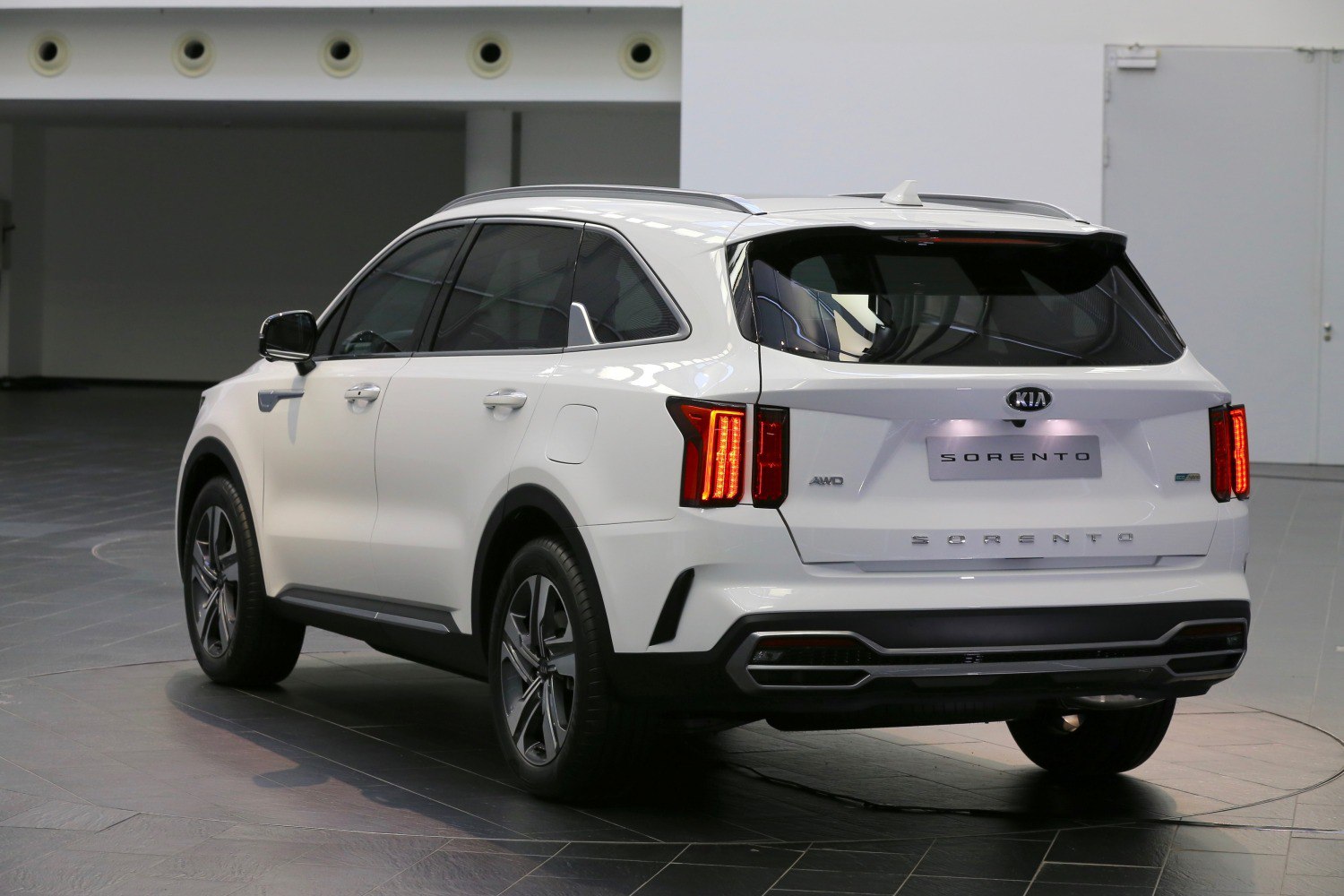

The second generation Sorento was originally available in four models – the Base, LX, EX and top-of-the-line SX models. The change in body construction as well as the loss of a low-ratio transfer case made the Sorento 475 pounds less than the old one model for model, to gain in performance and economy. The engine was transverse, and the suspension all-independent. The four-cylinder model returned to the lineup for North American models after being absent between 20. The second-generation Sorento introduced Kia's new design language, and introduced new features and technology that would later become available on other Kia models.

The vice president of marketing for Kia Motors America said that Kia initially considered changing the name due to the radical change in the Sorento's body style. The second generation used Kia's corporate Tiger Nose grille, and was the first Kia vehicle to offer Kia UVO. The second generation was Kia's first model to be manufactured in the United States, in Kia's new US$1 billion West Point, Georgia, factory (which also builds the sister vehicle to the Sorento, the Hyundai Santa Fe). The tail lights and front end were upgraded, but the two-box design stayed.Ī redesigned Sorento (codename XM) was launched in South Korea in April 2009. The 2007 Kia Sorento earned a five-star crash safety rating, the highest rating possible, for all seating positions in frontal and side impact crash tests conducted by the National Highway Traffic Safety Administration (NHTSA). Most of the EX trim had full-time AWD and 4x4 Low modes The LX had a part-time system with 2WD High (rear wheel drive), 4WD High (not for dry pavement ) and 4WD Low modes.
SORENTO MANUAL
The 5-speed manual transmission was no longer available the 5-speed Sportmatic tip-tronic automatic transmission was made standard for all vehicles. Projector beam headlamps were added, along with new tail lamps. Features such as satellite radio (on later models), leather-trimmed seating surfaces, heated front seats, a ten-speaker premium audio system, cassette and CD players, an in-dash CD changer, power front bucket seats, seventeen-inch (17") aluminum-alloy wheels, a power sunroof, two-tone exterior paint, and a security system were available regardless of trim level choice. Both models included an AM/FM stereo with a single-disc CD player and an eight-speaker audio system, dual front airbags and front and rear side-impact SRS airbags (side-impact front and rear SRS airbags for North American-market models ONLY), cloth seating surfaces, a power-adjustable front driver's seat, air conditioning, power door locks and windows, tinted windows, aluminum-alloy wheels, keyless entry, wood interior trim accents, a split-folding second-row rear bench seat, and monotone exterior paint as standard equipment. There were two trim levels available for the Sorento: either the base LX or the up-level EX. First generation Sorentos are equipped with a Hyundai-manufactured 3.5-liter 24-valve DOHC V6 engine producing 192 hp (143 kW) at 5500 rpm, and 217 lb⋅ft (294 N⋅m) of torque at 3,000 rpm.Ĭommon features of the first generation Sorento were 4-wheel disc brakes (standard on all models), optional anti-lock braking system (ABS), and a 21.1-gallon (79.9 litres) fuel tank.


It had two transmission options, a 5-speed manual or 4- and 5-speed automatic (pre-2005 models have a 4-speed automatic, whilst 2005 Sorentos came with a 5-speed tip-tronic style automatic). An optional four-wheel drive system with low range received praise for adding to the vehicle's off-road ability. All American Sorentos also came with dual front airbags and dual side-curtain airbags in the front and rear. Debuted in February 2002, the first generation Sorento was a traditional truck-based body-on-frame SUV.


 0 kommentar(er)
0 kommentar(er)
